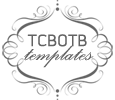Chapter 5 Focus Questions
3 Key Questions to be Considered When Selecting Educational Applications to Meet Students' Goals and Objectives
- According to Assistive Technology In the Classroom by Dell, Newton, and Petroff, when selecting educational applications to meet students' goals and objectives, there are several questions that must be considered. The first question is, "What is the intended outcome of the use of the educational application?" The second question is, "Is the educational application likely to fulfill its stated purpose?" The third question is, "Can the educational applications be used as an alternative to traditional classroom activities to enhance students' participation?"
Educational Applications That Address Automaticity/Math Fact Fluency
- FASTT Math (Basic math facts)
- Timez Attack (Focuses on multiplication facts)
- ArithmAttack (Played online or downloaded)
Technology Tools to Address Visual-Spatial or Motor Control Difficulties
- MathPad (Talking math worksheet program)
- MathPad Plus (Extends to fractions and decimals)
- Virtual Pencil Arithmetic (For students who are "pencil impaired")
- Virtual Pencil Algebra (Extends to algebraic equations)
- Number Navigator (Simple "math processor" with customizable colors, fonts, and font sizes)
- Microsoft Word's Equation Editor (For students with good mouse control but difficulty with handwriting)
- Math Type (For students in advanced math classes)
- Scientific Notebook (For solving equations)
- Meander's Annotator (For handwriting problems in geometry)
Educational Applications to Teach Math Concepts, Math Skills, and Problem Solving
- National Library of Virtual Manipulatives (VP)
- Illuminations (Online activities)
- Computing Technology for Math Excellence (More VPs)
- Internet 4 Classrooms (High-quality resources)
- Virtual Laboratories in Probability and Statistics
- Math Playground (Free, online math activities)
- Conceptua Math (Fractions)
- Destination Math (Math reasoning and conceptual understanding)
Low-Tech and Mid-Tech Adaptations to Assist Students with Disabilities With Math Assignments
- Manipulatives
- Rubber fraction stamps
- Manipulative number line
- Laminated addition and multiplication tables
- Ruler with transparency overlays
- Large calculators
- Talking calculators
- See 'n' Solve Calculators
- "Coin Abacus"
- "Coin-u-lator"


No comments:
Post a Comment